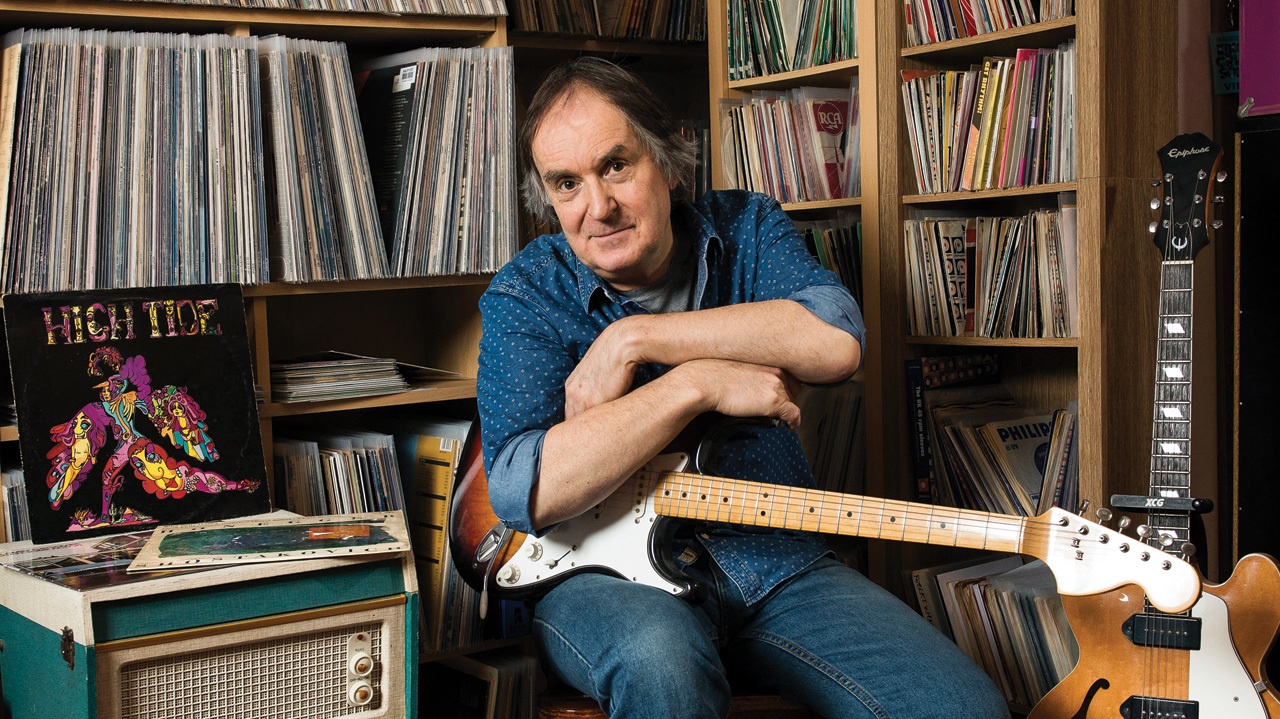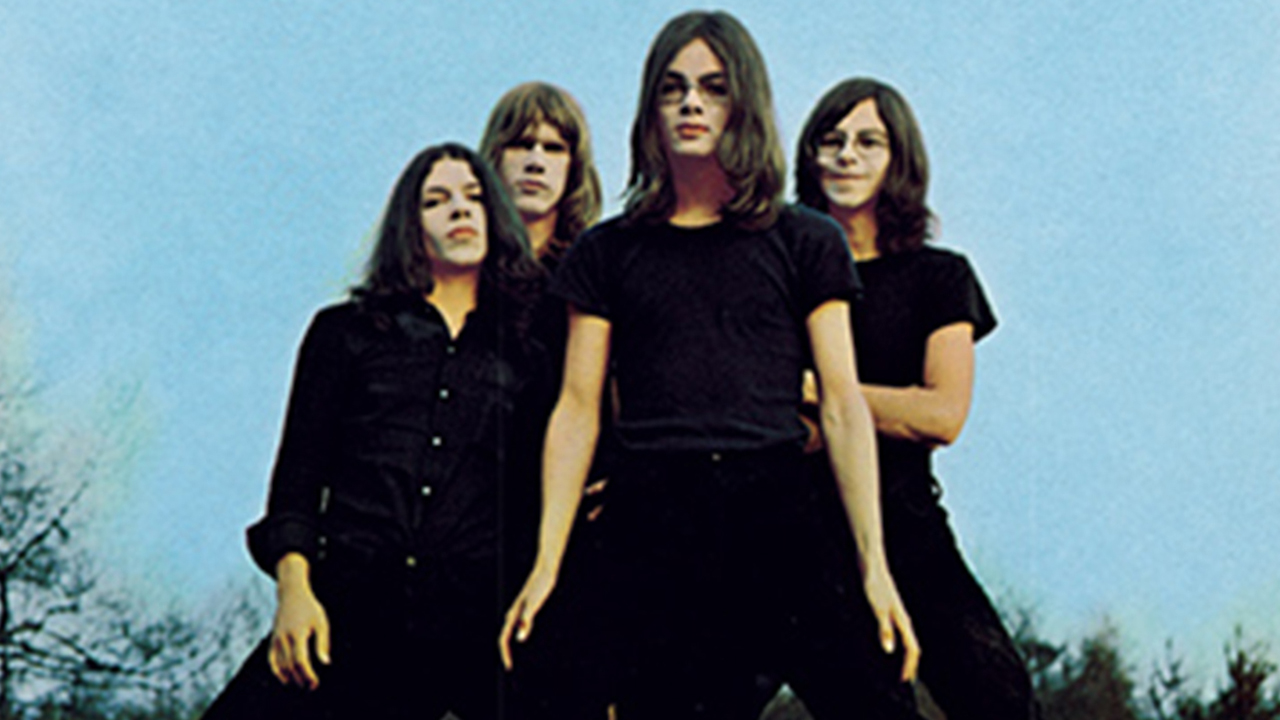Designer, historian and writer Phil Smee shows us his record collection
Even if you’ve not bought a record from Phil Smee's Waldo’s or Bam-Caruso labels, you’ll own something that he designed, from Motörhead to Return To Ommadawn. He opens up his archive...

“I’ve been into music ever since I was able to know what was going on, so that’s the late 50s. I loved guitar music: Duane Eddy, The Ventures, The Shadows… Then The Beatles happened when I was 13. If you lived through that era, it’s almost as if music was being invented.
1966 was such an important year. I was 16 and lived just outside St Albans. There must have been a dozen venues in town so you’d go to Market Hall and see The Birds, Pretty Things or Small Faces, or Faulkner Hall and see The Zombies. In ’66 guitar music went from being beat music to The Yardbirds’ Happenings Ten Years Time Ago, or what The Who were expanding into. Years later, when I was compiling the Rubble series I coined a phrase to describe the bridge: freak beat. Then The Beatles brought out Revolver, an enormous leap from the pop of Rubber Soul. It ended with Tomorrow Never Knows, arguably the first real concept prog piece. I bought my copy in The Record Room, probably served by my friend Mac [MacLeod] who played guitar with Donovan. Not only was the music different, but also the sleeve. The doors of experimentation opened and everyone started doing it.
I was a slightly lonely kid with a big record collection. My lifeline was John Peel’s show on Radio London, The Perfumed Garden, where he played anything he liked. This is how I heard The Mothers Of Invention’s Freak Out!, a double album with this monster track on it, Help, I’m A Rock. British music had a certain culture – Alice In Wonderland, 20s jazz. American music was based on their history. Frank’s influences were doo-wop and 50s music. The Beatles’ experimenting had been done at EMI under the auspices of guys in white coats; American bands would be in their own studios, doing their own levels. This music was very exciting.
Sometime in 1968 he played a track composed of sounds that I’d never heard before. Luckily, like most weeks, I was taping the show. I played it over and over. It was called Marche, from Structures Sonores by Lasry-Baschet. The Record Room found me an imported copy. It featured out-of-this-world sounds played on metal and glass instruments constructed by Bernard and Francois Baschet. I’ve managed to buy many of their albums and early EPs, which range from avant-garde sound collages to psychedelic musical pictures. It was a prequel to what was to flourish.
I was very into the Elektra label. I loved Bill Harvey’s designs and typography – he was the first to make a logo for every band on a label. I was painting and making posters at home, and when I applied to Watford School Of Art I took these along. The Principal had never seen anything like it before, he thought I was a genius! My favourite LP design is Da Capo; it’s also my favourite Love album. Side one is perfect, but side two has the long track, Revelation. It starts with a Bach partita then hits this live thing. Some people can’t handle it! [Laughs]
Peel also played The Velvet Underground. The psychedelic chaos track at the end of their first album, European Son, sounded so musical and beautiful, I couldn’t wait to hear it again. I bought the British copy that has the band picture from the back on the front. When I realised the difference, I searched for the one with Andy Warhol’s banana design. Warhol was a big influence on me and at art school we were lucky because our tutor Peter Schmidt – who went on to work with Brian Eno – knew so many people, like Eduardo Paolozzi or Claes Oldenburg, who would do talks.
Me and my friend would go to gigs all the time, planned out via the Melody Maker guide. Saturdays were normally Middle Earth club, for example. One night we went to Watford Technical College to see Fairport Convention and two supports we’d never heard of. Steamhammer was one, High Tide were the other and ridiculously good, they seemed to be playing one track the whole time. That week I read an article in ZigZag about them, saying they’d come out of The Misunderstood, who’d recorded one of my favourite singles, I Can Take You To The Sun. For me, their second, self-titled, album is the start of real progressive music – hard-edged long compositions that weren’t poetic or symphonic.
Sign up below to get the latest from Prog, plus exclusive special offers, direct to your inbox!
I’d listen to the BBC Third Programme; that’s BBC Radio 3 now. They had some interesting themed programmes and one featured the Bonzo Dog Band, some musique concrète and Arthur Honegger. It seemed to me like pop music of its time, quite improvised in the middle section – classical music obviously wasn’t as strict as we thought. It was progressive in moving on from traditional symphonies. People like Honegger had a hard time getting accepted. That opened the door to early 20th century classical for me and I found no difference between that and something like High Tide, with Simon House improvising on violin.
The other side of prog is Canterbury. I loved the first Caravan album, and Soft Machine. Then Third came out, four long tracks of incredible composition and great sounds thanks to Mike Ratledge’s organ. On Moon In June I could see this was going to take music somewhere else and a lot of bands owe them a debt, particularly the Dutch scene. I saw them play in Dunstable, looking like the Benny Goodman Band with music stands in front of them, standing up to play their parts. Later, when Robert Wyatt was on the Ryko label I worked a lot with him and [his wife and artist] Alfie. He’s one of the most humble, gentle guys.
After art school, I got a job as a designer for a book publisher in London, Chatto & Windus. Every lunchtime I’d go record shopping – Dobell’s, Soho Market, Cheapo Cheapo, Collet’s for folk – and buy three or four albums. One day it was 19. Most of my record collection amassed in that 70s period. My only regret was I didn’t more money to spend!
I love Jellyfish, The Posies and Grandaddy. They were part of a US scene that was just like the 60s underground. Guys doing their thing like E emerged, who’d done two albums before he became Eels. Beautiful Freak was recommended to me and I bought it because of the cover. Sure enough, it had a feel of the psychedelic pop music I’d been missing. We then found armfuls of CDs by other bands to enjoy: Wanderlust, Wondermints, Baby Lemonade.
Having your own record label is a treat, you can do what you like. Nick Haeffner came from a band I put out called The Tea Set and he could play anything. On The Great Indoors, he wanted to do something different with each track. We had tubas, upright bass, birdsong, a string quartet – and on the sleeve, my then four-year-old son Alex coloured the letters in. Nick’s a genius, and a professor in film now. His advance was a Fender Jaguar from Dean Street, quite a sum at that time!
It’s amazing to see so many people still performing these days. King Crimson are phenomenal right now, like watching trapeze, such feats! After all this time it’s as good, if not better than anything coming out today.”
We have a leaf through Pub Landlord Al Murray's record collection
We take a look through Penny Smith's record collection
Little Britain actor Paul Putner lets us leaf through his record collection
- Meet the best turntables for your record collection
- Smaller budget? No problem! These are the best budget turntables
Jo is a journalist, podcaster, event host and music industry lecturer who joined Kerrang! in 1999 and then the dark side – Prog – a decade later as Deputy Editor. Jo's had tea with Robert Fripp, touched Ian Anderson's favourite flute (!) and asked Suzi Quatro what one wears under a leather catsuit. Jo is now Associate Editor of Prog, and a regular contributor to Classic Rock. She continues to spread the experimental and psychedelic music-based word amid unsuspecting students at BIMM Institute London and can be occasionally heard polluting the BBC Radio airwaves as a pop and rock pundit. Steven Wilson still owes her £3, which he borrowed to pay for parking before a King Crimson show in Aylesbury.

